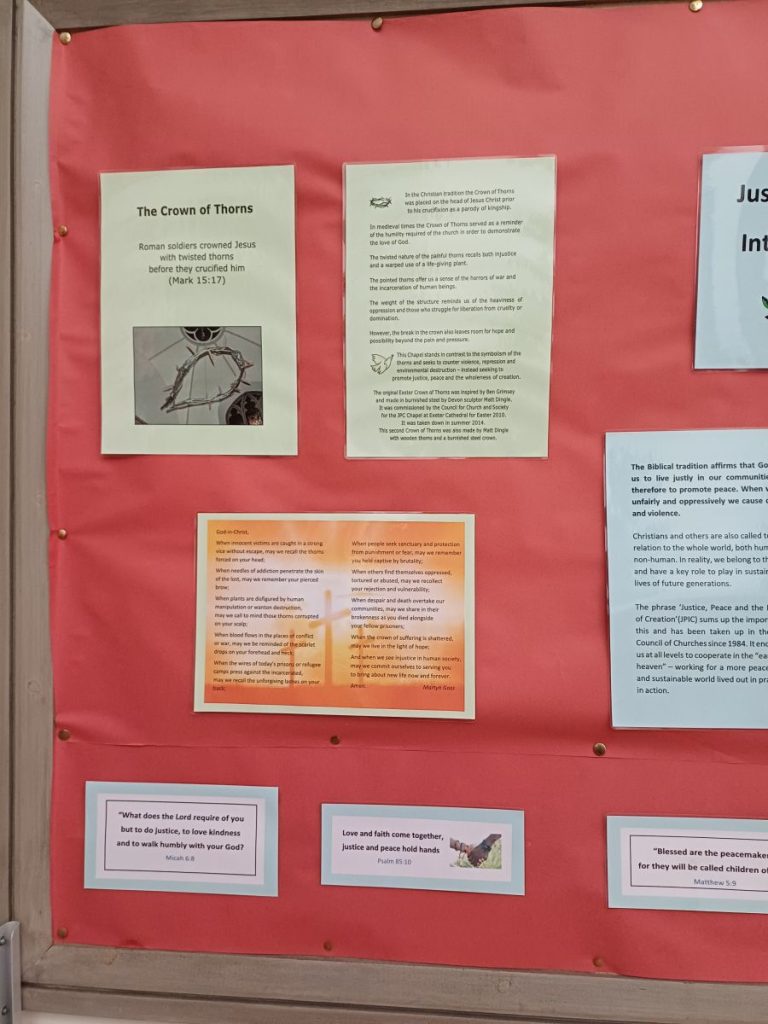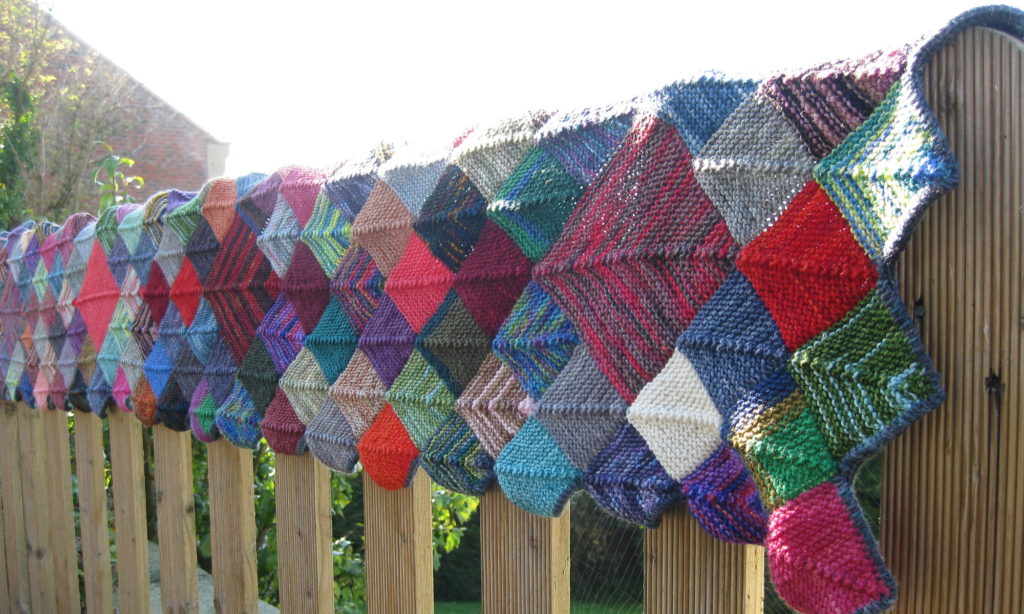For several reasons, I ended up driving down to Devon for my retreat. This meant that I had the freedom to stop off on the way back and spend some time doing church visits. This didn’t go entirely to plan thanks to a massive tailback on the M5, so I shelved my original intention of visiting Tewkesbury Abbey. Before all that, I went into Exeter City Centre and looked round the churches there.
Exeter seems very similar to York – similar mix of ancient and modern, shopping and heritage and with a large cathedral as a focal point. Earlier in the week someone had told me about a trail that takes you round the city churches. I downloaded the leaflet and was ready to go. The trail is actually produced by the Churches Conservation Trust (you can find a copy here) and offers clear directions for a circular walking route of about a mile.
One of the churches is in the care of the Churches Conservation Trust, most of the others are part of the Parish of Central Exeter, and there was at least one that seemed to be on its own. The website of the Parish of Central Exeter has clear information about the location and opening hours for each of their church buildings.
I began the trail just outside the Cathedral, at St Martin’s Church, which is under the care of the Churches Conservation Trust.

As you would expect from a CCT church building, the emphasis on the interpretation offered in the church is mainly historical. Interestingly, they do a better job of bringing to life the medieval faith than they do of the more recent past. However, they also had available leaflets from the Parish of Central Exeter including a Prayer Pilgrimage booklet and a leaflet on What Christians Believe. These were available from in each of the church buildings that I visited. I hope we can develop versions of both of these for the York City Centre Churches.
The Prayer Pilgrimage booklet takes inspiration from the physical features of the buildings and uses them as a focus for prayer, explaining the symbolism and how they fit into the Christian faith and offering a written prayer inspired by each.
Moving on from St Martin’s, I came to the ruins of St Catherine’s church, which was bombed in the same series of air raids that damaged our St Martin’s. Exeter have taken a rather different approach to these ruins – they are beautiful and very striking.

There is very little interpretation but you can see the footprint of the church and walk through it. At various points there are upright pointed arched windows with fragments from the rubble set into them.

Set into the sections of the church either side of the path are stone slabs with text carved into them. They appear to be excerpts from the parish records.

This must have been a very small parish since the next church building is almost next door, reached by going through a low archway which goes underneath the sanctuary of the Church.


This is St Stephen’s Church. They have obviously had a lot of investment, including a heritage lottery grant. At the back of the church building is a fairly large touch screen with a variety of information on the history and life of the parish.

The display includes details about who St Stephen was and why he is important to the Christian faith, mentioning his impact on Saul/Paul and the relationship to Boxing Day. It also describes the life of the Church community today and what is important to them, especially the importance of accessibility. In visiting this place, I was really struck by the feeling of light, space, attention to detail and the beauty of the banners. This is a church building that feels well cared for.
Next on the list is St Pancras, a tiny church building right in the middle of a shopping centre.

St Pancras is a member of the ‘small pilgrim place‘ network, which I had never heard of. The building is simply laid out as a place of prayer and peace. At the back of the church are some display boards which integrate history and Christianity really well.



Continuing on round the walking route, I found an extra church building, which is not included in the list. This was St Petrock, which has been converted into other uses. The back of the building, with access opposite the cathedral, is a charity for the support of the homeless (seems to be run on similar lines to our Carecent). The front of the building – accessible from the main shopping street – is a regional centre for bell-ringing, but also has a Chapel of Reconciliation and Justice.
It wasn’t really clear from the front entrance that there was this dual purpose – it just looks as if the church is completely closed and out of action apart from the entrance hall and chapel.
In the entrance hall, along with details of bell ringing in the area, there is a small display about the Chapel of Reconciliation and Justice, explaining how this is integral to the Christian faith.


After 5 church buildings in under an hour, I was starting to flag, but there were still several to go so I persevered and found the church of St Olave. It couldn’t be more different to our church of St Olave in terms of the building – small and dark with heavy wood panelling. It is a beautiful place to sit.
There were no displays with interpretation in this church building, but there was a QR code, which links to this page, where you can choose between information on the history of the church and the architecture. Of all the Central Exeter parishes, this was the one with least evidence of an active Christian community. There are a lovely set of mosaics with stations of the cross on around the building – it would be really good to have some introduction to these and a guide to praying with them.
The next building on the walking tour was St Mary Steps, which is not part of the same parish. The church building was closed, with no indication of when it might be open. The noticeboard outside just had a list of services, contact numbers (no website) for clergy and wardens, and a notice about the carved figures that normally go above the clock, which have been removed for restoration.
Finally, I was on my way back up the steep hill to the Cathedral when I spotted the Sacred Heart Roman Catholic church. As I was feeling ecumenical, I went in. There were quite a few people in there praying. Their visitor’s guide was a laminated sheet of A4, double-sided, which gave a walk-through of the building, pointing out various features. It assumes quite a high degree of knowledge – to the average person who just wanders in, I suspect it would be pretty useless. Do you know all these terms? Nave, reredos, tabernacle, sanctuary, vault, baptistery.
Summary
We have a lot to learn from the Parish of Central Exeter. Our communication, our resources, our interpretation (both high tech and not) and the general presentation of our buildings as active Christian communities could all be better.
